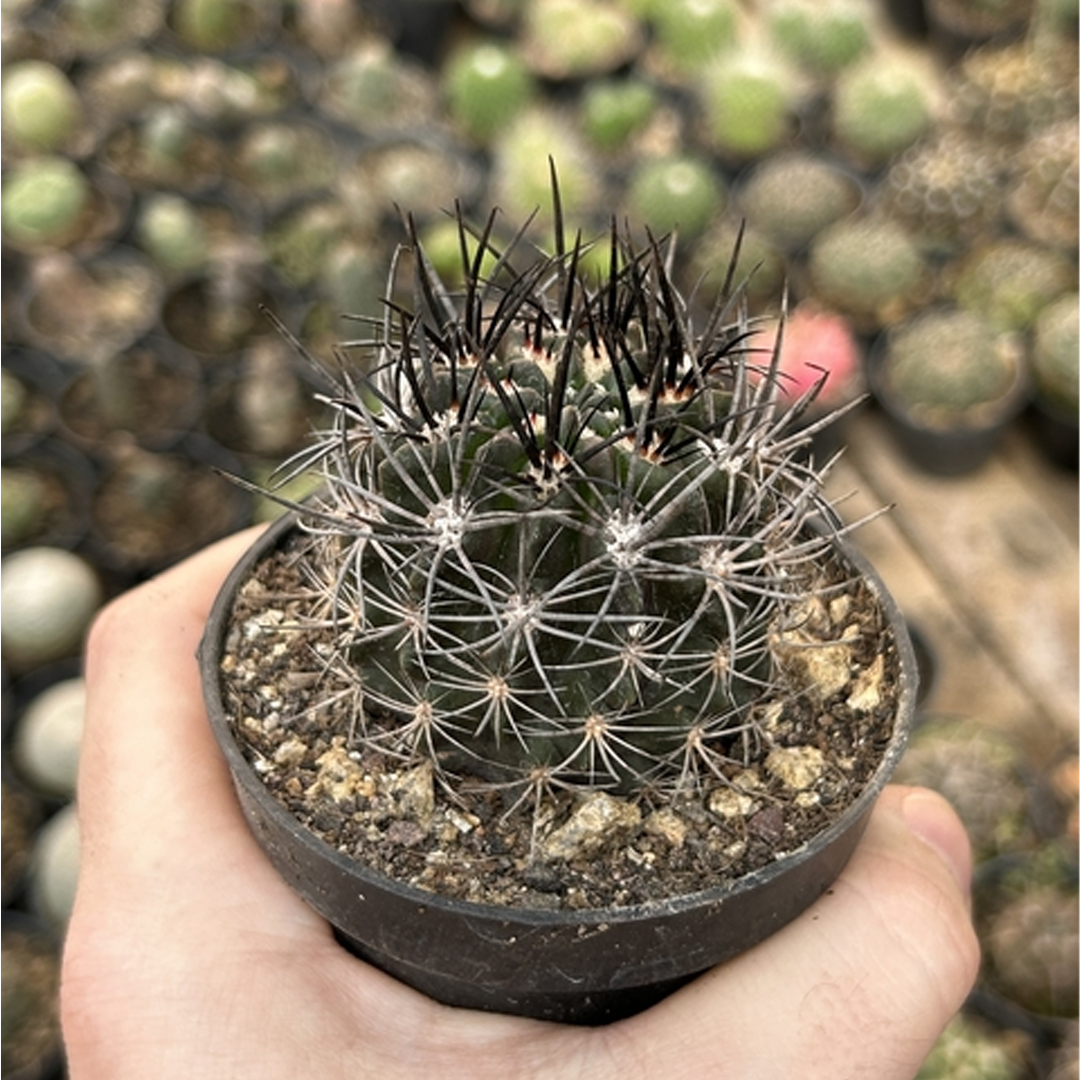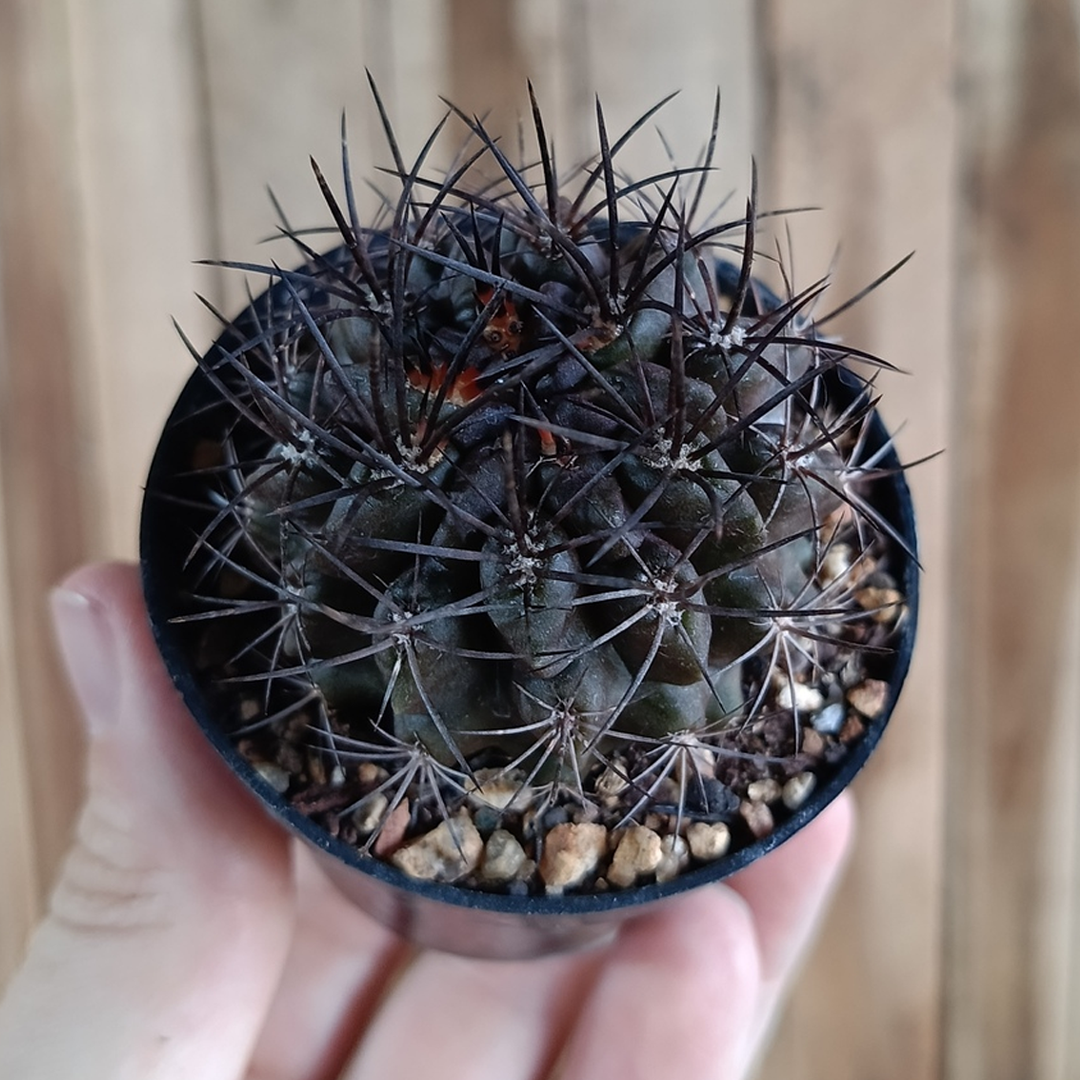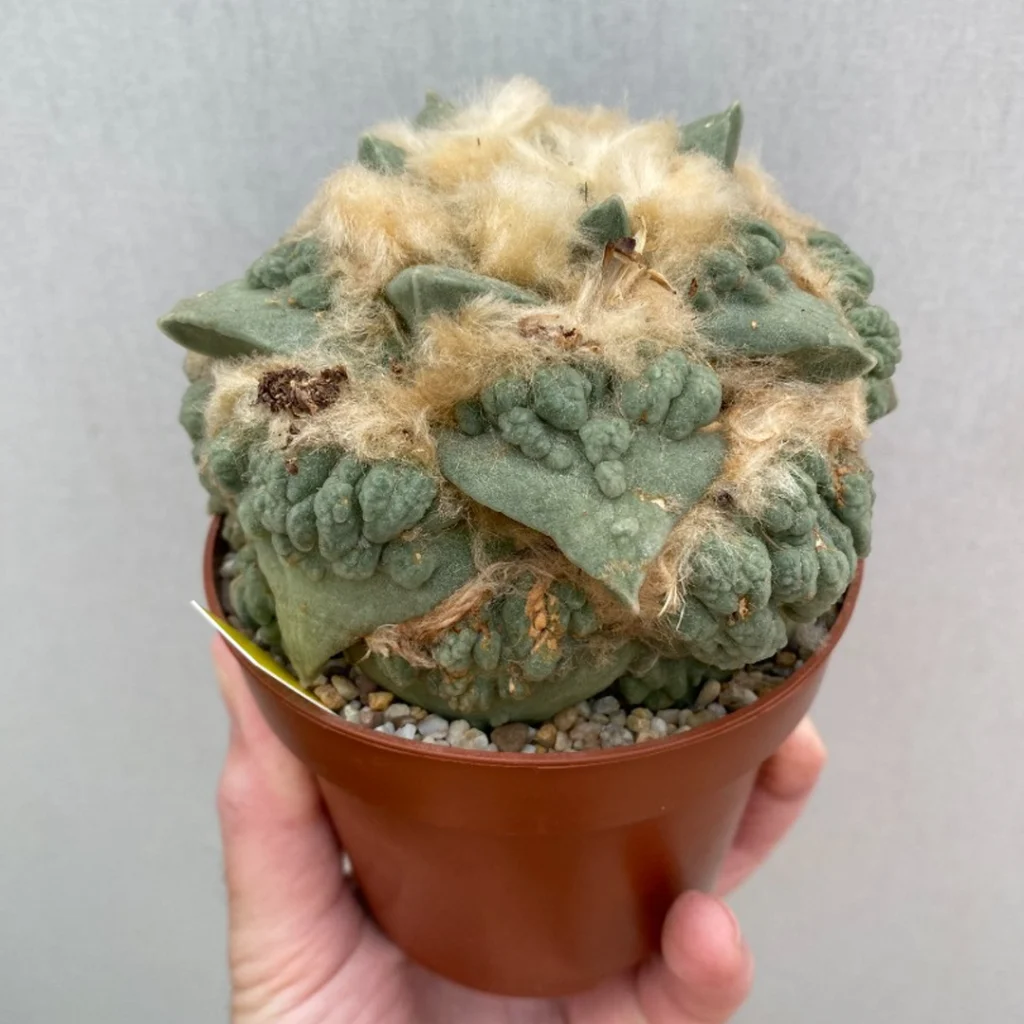Eriosyce ceratistes, native to the arid regions of Chile, is a distinctive and hardy cactus species that belongs to the Eriosyce genus. Its name derives from Greek, with “erio” meaning wool and “syce” referring to figs, alluding to its fruit’s woolly appearance.
This cactus features a dark green, cylindrical stem adorned with prominent ribs lined with areoles. From these areoles, clusters of sharp, straight spines emerge, varying in color from pale yellow to dark brown, depending on the individual specimen. These spines offer both protection and a visually dramatic contrast against the cactus’s smooth surface.
During the blooming season, Eriosyce ceratistes produces tubular flowers that range in color from deep pink to bright magenta. The flowers are particularly eye-catching and can last several days, adding vibrancy to its rugged aesthetic. Following the flowering phase, wool-covered fruits develop, further adding to the plant’s appeal.
This species thrives in rocky, well-draining soils and is exceptionally drought-tolerant, making it an ideal choice for xeriscaping or as part of a desert-themed garden.
How to Care
- Light: Requires full sun to partial shade. Ensure it receives at least 4-6 hours of direct sunlight daily.
- Watering: Water sparingly, especially in winter. Allow the soil to dry out completely between waterings.
- Soil: Prefers a gritty, well-draining cactus mix with added sand or pumice.
- Temperature: Thrives in temperatures between 15°C and 30°C (59°F to 86°F). Protect from frost and prolonged cold.
- Fertilizer: Feed once a month during the growing season with a balanced cactus fertilizer. Avoid over-fertilization.
- Repotting: Repot every 2-3 years to refresh soil and accommodate growth.
- Propagation: Propagate through seeds, as offsets are rare. Patience is required for seed-grown specimens.























